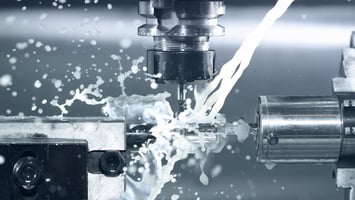Metal components are produced in a variety of shapes and sizes, each tailored for specific...
Kryton Metals Blog
Metal Fabrication Costs & Quality Control

The cost of metal fabrication is inexorably tied to its quality. Each project’s budget must accommodate specific industry standards and design elements, and the final product must be both cost-effective and valuable for its intended purpose. As with most manufacturing processes, several factors can affect the price and quality of the final product. Understanding these variables can help you determine the best approach. This article will explore what manufacturers should know about metal fabrication costs and quality control.
Manufacturing Experts Define Quality
An assessment of quality is subject to multiple considerations, even in precision manufacturing. The designer determines whether the final product aligns with the initial concept, and they must observe industry standards to ensure compliance with ISO standards and consumer expectations. However, that’s only part of a comprehensive quality control system.
Engineers and machining teams must make a series of decisions to ensure safe and accurate metal fabrication. Their choices can increase or decrease a part’s quality and usability. Many fab shops utilize multiple quality assurance tools to check and double-check their work. This can take extra time and money, but industry standards may require it.
Manufacturers define quality based on whether a fabricated metal part meets or exceeds those standards. Parts that fail to measure up can be scrapped or stripped for materials to reuse. However, other processes and extended lead times can affect your price. Talk to your team for more specific information or a customized plan.
Quality Control Measures Affect Manufacturing Costs
Achieving high-quality metal fabrication requires a worthwhile investment—a concept that is well understood by manufacturers who prioritize excellence. However, you can still save money by understanding the factors that affect costs.
Tighter tolerances may mean more cost.
The cost of metal fabrication significantly depends on the required tolerances. For instance, consider a metal disc with specific diameters and a hole. If the hole's tolerance is ±0.030", a 2D laser can cut it out efficiently. However, if the tolerance is tighter, say ±0.001" or ±0.002", the hole must be drilled, necessitating an additional deburring operation. Each added step raises the fabrication cost exponentially, illustrating how tighter tolerances can escalate expenses.
Some raw materials cost more than others.
Expect to pay a premium for rare materials or high-quality parts that are challenging to fabricate. Some suppliers might also charge extra for metal products that require international shipping or initial processing. Supply chain disruptions are unpredictable and out of the shop’s control, so budget accordingly.
A complex manufacturing process can be costly.
Engineered metals make the world go around. They also invite innovation and require advanced machining techniques to fabricate complex designs. However, complicated geometries and tight tolerances can be expensive. Sophisticated manufacturing processes utilize built-in quality control systems to expedite outcomes, but the software and tools required could break a small budget.
Industry standards could require enhanced fabrication.
A project could entail multiple iterations, depending on the industry’s quality standards. Meanwhile, companies that have an ISO-certified quality management system may necessitate modification to some design elements. Restarting the manufacturing process is not cost-effective, so many teams use rapid prototyping to assess and troubleshoot parts. When you use an experienced fabrication shop, advanced metal fabrication can be less expensive despite these factors.
Finishing adds costs.
If your project requires additional metal finishing, expect a higher bill. Your costs will also increase if you order assembly, inspection, or mass production after the initial fabrication.
4 Ways to Reduce Cost While Maintaining Quality in Metal Fabrication
High-quality manufacturing requires flexibility and an experienced team. It also takes an intelligent approach that employs cost-effective metal fabrication techniques. Use these tips to save money without sacrificing the quality of your final product:
- Use an appropriate quality control system—Develop a quality control system that supports your project’s goals and tailor inspections to suit applicable industry standards.
- Choose abundant raw materials—Avoid fabricating metals that are hard to find. Discuss potential alternatives with your engineering team.
- Begin with straightforward designs—Save the complex geometries for when you have more time or capital. Start with simple iterations and build from there.
- Consider rapid prototyping—Additive layer manufacturing (which includes 3D printing) can be used to mock metal parts, allowing you to check design elements, eliminate unnecessary waste, and streamline production. Digital manufacturing techniques may require an additional upfront fee, but these processes can pay for themselves over time.
Several factors can influence the cost of metal fabrication. When you understand how different variables affect pricing, you can get the best end products at the lowest possible cost. Discuss the details with your team, make sure your project is aligned with industry standards, and calculate a budget. To learn more about the metal fabrication process, subscribe to our blog.

.jpg?height=200&name=metal-spinning%20(2).jpg)

